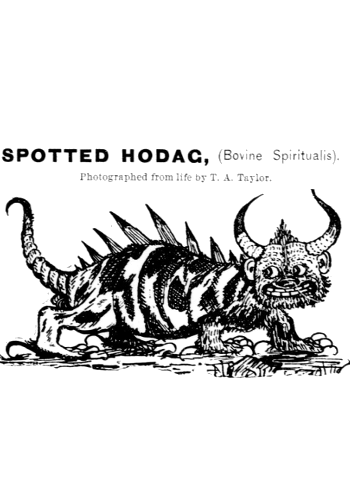
Origin of this wonderful animal is mostly wrapped up in mystery. The best informed scientists have traced it back to the Reptilian age. This would place it among the oldest known living species. It is easy to trace the effect of the Manmalian age and the suceeding age of man on the form and character of this animal. It has lost nearly all the distinguishing features of the reptile. Its scaly, flexible tail with a sharp, hooked point, the row of spikes on its back, and the short, crooked legs are the principal reptilian parts remaining. But it is, no doubt, at present classed with the Mammals by the best and most learned authorities on the subject. Its body and horns resemble most closely those of the ox in form, but its horns are much sharper and stronger than those of the ox, and are articulated when they leave the head, and can, at the will of the animal be pointed in any direction and thus form a most dangerous weapon offensive or defensive.
The legs are bent and apparently quite short when the Hodag is at rest and moving slowly undisturbed in its native haunts, but when aroused or seeking its prey they straighten out to a remarkable length and develop great speed. Each foot is armed with three formidable claws in front, very sharp and strong. These claws are articulated which adds greatly to their usefulness. From the heel of each foot projects a long claw with a fish hook point. The claw is of great service in tearing to pieces the bears or other animals



